The Getty Center in Los Angeles has unveiled Mural (1943), a major early work by Jackson Pollock, owned by the University of Iowa Museum of Art and newly restored by the Getty’s Conservation Institute and the Getty Museum, after two years of analysis and treatment.
The painting’s story begins in wartime New York. Peggy Guggenheim was initially sceptical about this fêted young artist, but when Marcel Duchamp and Piet Mondrian both vouched for Pollock’s seriousness, she not only offered him an exhibition at her Art of This Century Gallery, but also commissioned a mural for the entrance hall of her East 61st Street apartment.
The painting that Pollock completed in the summer of 1943 was indeed mural-sized, but it wasn’t strictly a mural. According to Guggenheim many years later, it was Duchamp who persuaded the artist to paint not directly onto the wall but onto an extra-large canvas (sagely anticipating Guggenheim’s return to Europe after the war). The painting did, nevertheless, completely fill one wall of the room, and was so large that guests entering the apartment had little hope of seeing it all at once in such close quarters.
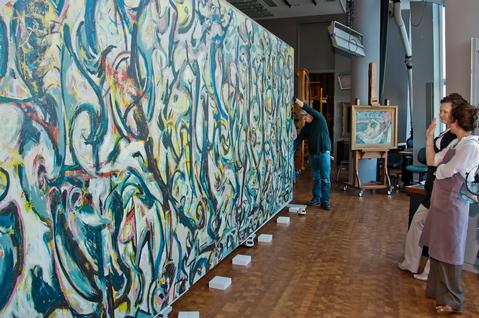
Jackson Pollock’s ‘Mural’ has been newly restored by the Getty’s Conservation Institute Photo: Stacey Rain Strickler
These circumstances may account for the ‘all-over’ nature of the painting’s abstract composition; there is no centre, and no recognisable figurative elements. In these respects it was radical, and it paved the way for Pollock’s iconic drip technique – which he did not hit upon until four years later.
As a c. 1946 photograph of Pollock in front of Mural shows, the artist did not at first sign and date the painting. It was only in 1947, when he was invited to participate in the Museum of Modern Art’s exhibition ‘Large-Scale Modern Paintings’ that he saw fit to conspicuously sign and retroactively date it. As a result, the MoMA show made Pollock’s name.
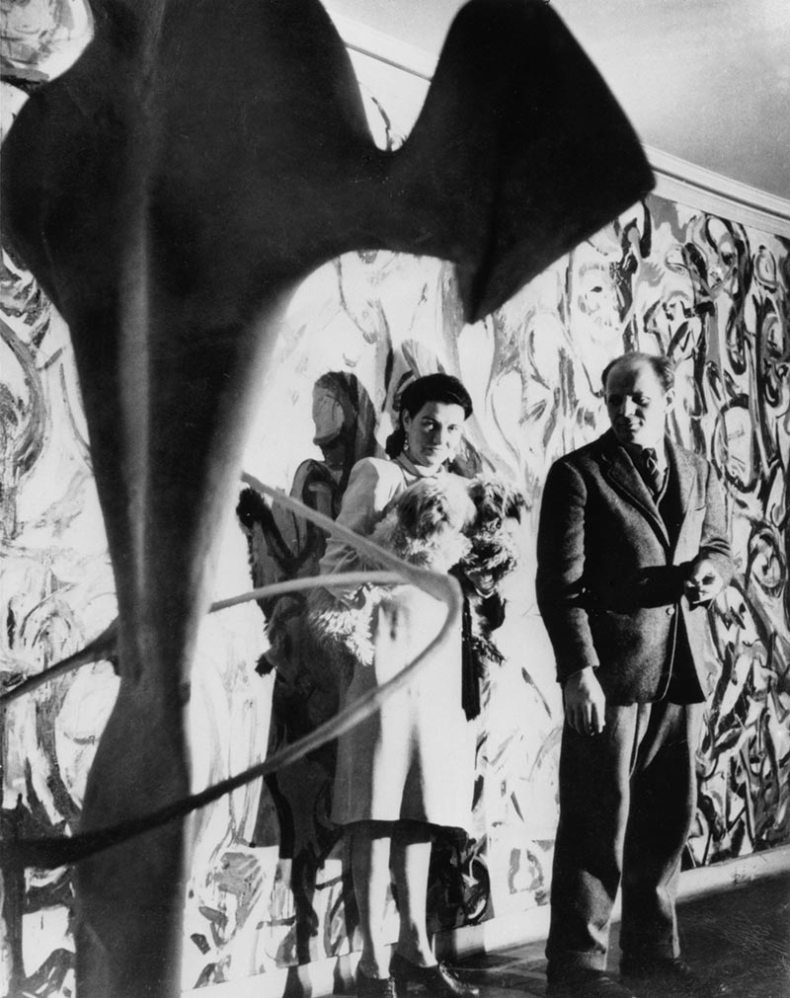
Peggy Guggenheim and Jackson Pollock in front of Pollock’s Mural (1943) in the first-floor entrance hall of Guggenheim’s residence, 155 East 61st Street, New York, c. 1946. Other work shown: unidentified David Hare sculpture (partially visible, foreground; c. 1946) Photo: George Karger, courtesy Solomon R. Guggenheim Museum Archives, New York
During the course of its study of the painting, the Getty revealed some interesting facts, and debunked some myths. People have often claimed – partly on the basis of Lee Krasner’s anecdotal reports – that Pollock painted Mural entirely in one feverish, late-night session. Layers of distinctly dried paint disprove this, although a basic design with a limited palette probably was executed in a single session.
Other spindly drips on the canvas seemed to suggest that the painting may have been made, in part, horizontally, which would dramatically prefigure Pollock’s famous later flooring of his picture plane. But we also know that the original painting was so huge that it barely fitted in Pollock and Krasner’s apartment. (They apparently had to remove a wall to fit it in.) There was no space to lay it flat. The Getty’s Tom Learner became obsessed by this conundrum, eventually enlisting the help of an artist who successfully mixed oil paint with a binder that allowed it to be flung, without dripping, at a vertical canvas.
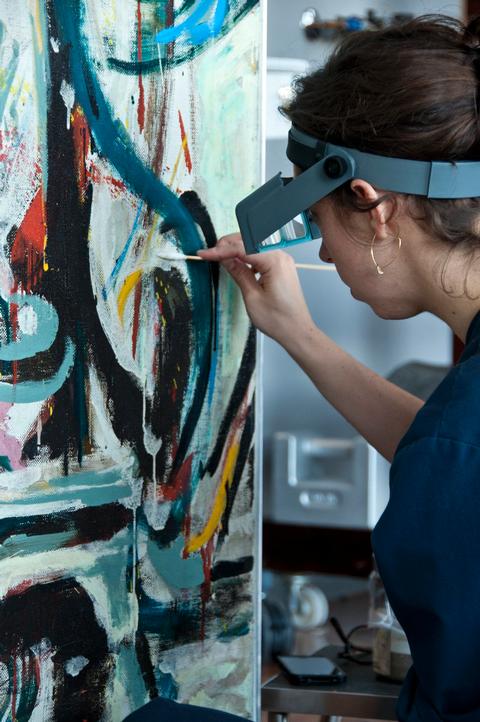
During the course of its study of the painting, the Getty revealed some interesting facts, and debunked some myths Photo: Stacey Rain Strickler
Mural now hangs on a new, specially shaped, stretcher and with its milky varnish, applied in the 1970s, painstakingly removed. Visitors to the Getty can see not only the magnificent painting but also a fastidious – and only occasionally nerdy – display of information telling them more than they ever thought they needed to know about this game-changing work of art.
Jackson Pollock’s Mural is on display at the Getty Center until 1 June.
Unlimited access from just $16 every 3 months
Subscribe to get unlimited and exclusive access to the top art stories, interviews and exhibition reviews.

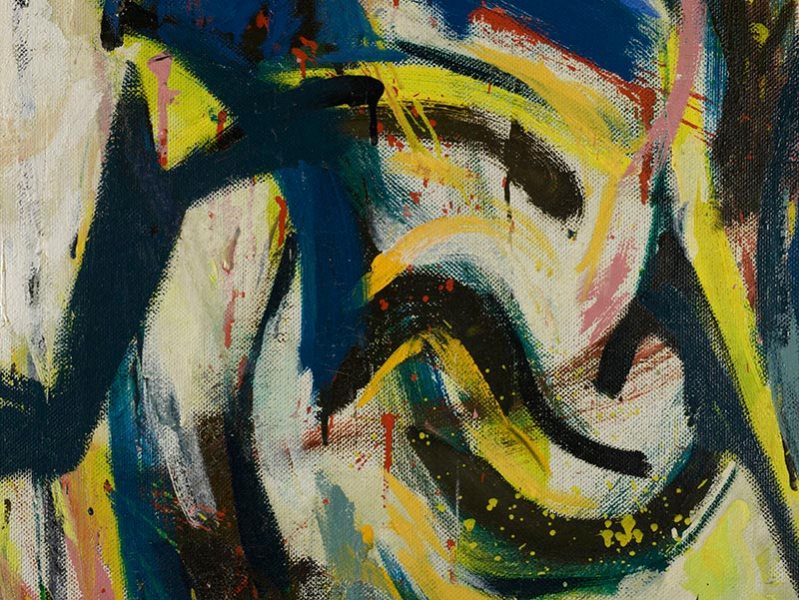
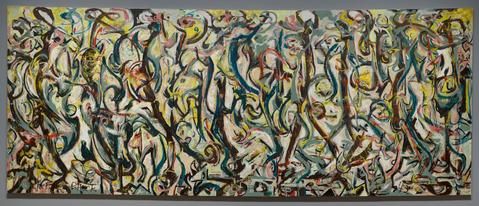
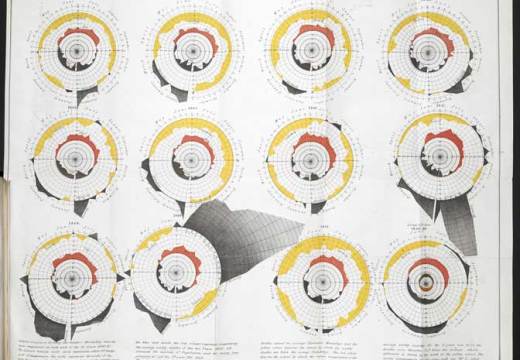
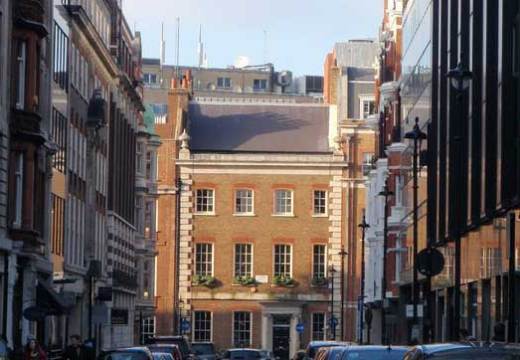
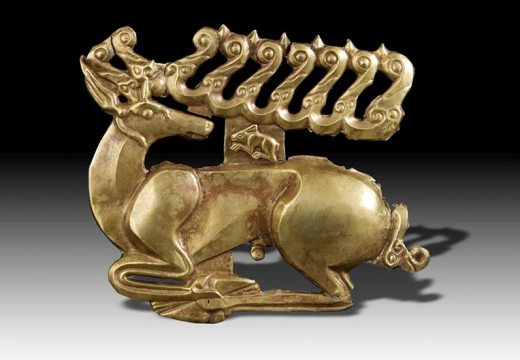









![Masterpiece [Re]discovery 2022. Photo: Ben Fisher Photography, courtesy of Masterpiece London](http://www.apollo-magazine.com/wp-content/uploads/2022/07/MPL2022_4263.jpg)
Has arts punditry become a perk for politicos?